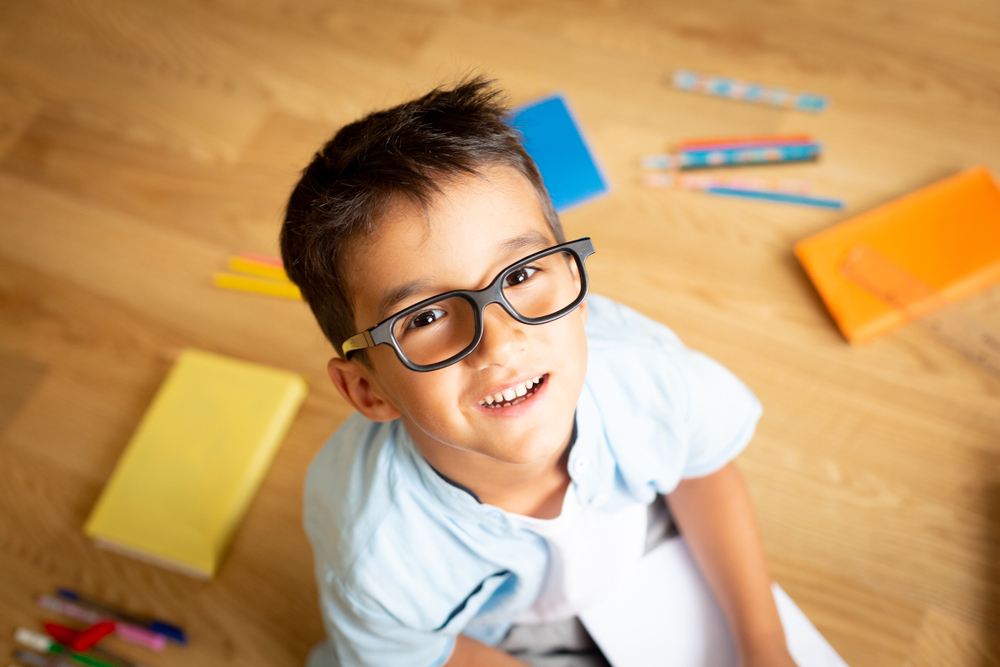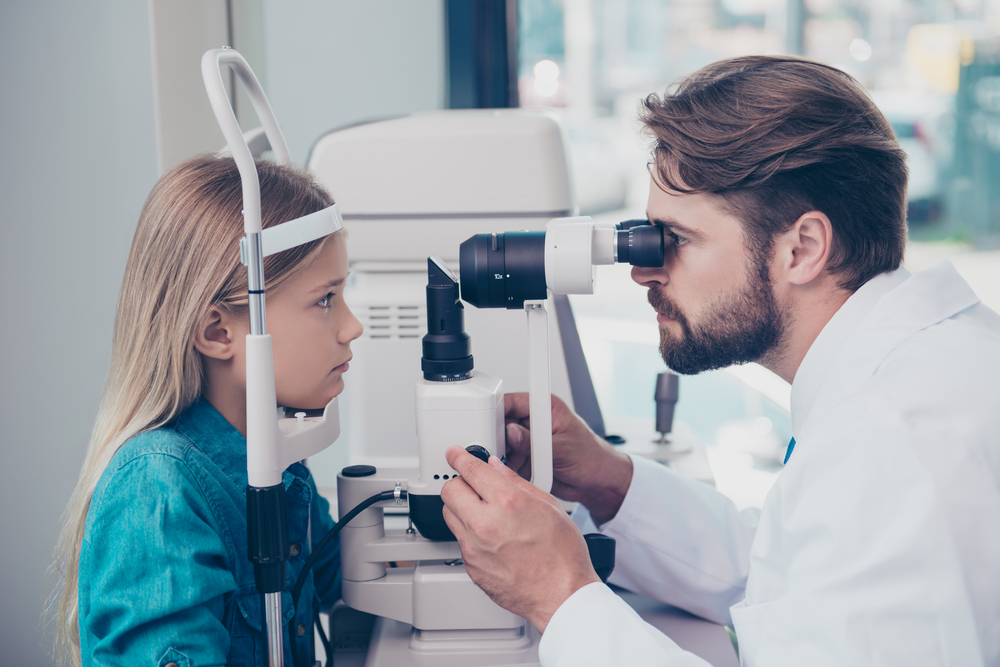Myopia or nearsightedness is a common eye condition that makes it harder to look at objects that are at distance. However, those that are near appear clear.
What Causes Myopia? (Nearsightedness Explained)
Myopia is known as a ‘refractive’ error. It usually occurs when the eyeball is too long, or the cornea is too curved. This means that the eye is unable to refract or bend light properly. Instead of focusing the light on the retina, it is focused in front of it (see image below). Myopia is a very common eye condition. According to the Canadian Association of Optometrists, it is estimated that almost 30% Canadians are myopic.

It is difficult to determine what causes it, but research has shown that genetic factors may play a role in the development of myopia. If one or both of your parents are nearsighted, this may increase your chances of developing myopia. Other than hereditary factors, your environment can also cause you to develop this condition such as spending a lot of time indoors. People who look very closely at objects while working such as computer screens or while reading are also more likely to develop myopia.
Types of Myopia
There are different types of myopia and through a comprehensive eye exam your doctor can diagnose which type you have and recommend treatment accordingly.
- Simple myopia: this is the most common type. The eye is otherwise healthy and has some refractive error.
- High and pathological myopia: these are more severe refractive errors. High myopia usually develops at a young age and gets worse with time. If left untreated, it can lead to other eye diseases such as glaucoma, cataracts, retinal detachment, and macular degeneration. Pathological myopia can occur with additional eye conditions such as retinal atrophy.
- Myopia is just one of several common refractive errors. Learn how it compares to presbyopia and hyperopia in this guide.
Myopia in children

Myopia is very common in childhood and begins at the ages between 6 and 14. Research shows that it is on an overall rise in this age group. A likely reason is because of increased use of digital devices and playing video games. It is important to look out for signs that may indicate that your child is nearsighted. Some common signs are excessive blinking and rubbing of eyes, sitting too close to the television or computer screen, looking at objects very closely etc. Some common symptoms are discussed below. Parents play a critical role in managing nearsightedness in children. For actionable tips, check out our full guide on preventing myopia in children.
Symptoms of nearsightedness
- Blurred vision and tired eyes: you may have trouble looking at objects farther away from you.
- Squinting: You may find yourself squinting while looking at something as you try to focus on objects at a greater distance.
- Headaches: it is common to get headaches if you’re nearsighted as you tend to look at objects closely which puts strain on your eyes.
How Is Myopia Diagnosed and Treated?
Myopia is easily diagnosable. Your optometrist can do a comprehensive eye exam to determine if you are nearsighted. At LMC Optometry, we offer eye exams for the whole family. Click the button below to book an eye exam.
If your eye exam results included terms like ‘20/40 vision,’ you may be wondering what that means. This article explains 20/40 vision and how it relates to myopia and overall eye health.
Effective Myopia Treatments: Glasses, Contacts & More

The most common treatment of myopia is glasses or contact lenses. Your optometrist can determine what type of lens you need and prescribe a custom prescription to correct your nearsightedness.
At LMC Optometry, we offer both eyeglasses and contact lenses to suit your needs. Click the button below to browse the brands we carry.
Specific contact lenses have been developed to control the progression of myopia. With these specialty contact lenses, patients can potentially correct the shape of their eye, lessening the effects of myopia. MiSight 1 day is a daily disposable lens designed for children and proven to be effective in the control of myopia.
Get regular eye exams! An important measure to diagnose myopia and slow its progression in early stages is to get regular eye checkups.
Lifestyle and preventative measures
Although it is hard to completely prevent myopia, it is possible to slow its progression. Here are some ways you can protect your vision:
- Spend more time outdoors. This is especially important for children. You should encourage your child to spend time outside, not only does it give a break to their eyes, but it also helps to keep them active!
- At LMC Optometry, we offer a wide range of stylish sunglasses and great deals to match. Explore our sunglass brands and promotions.
- Eat eye healthy food! Salmon and tuna are high in omega 3 which is great for your eye health.



